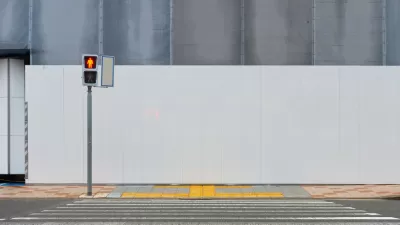The affordance theory, a combination of environment psychology and art, can be tapped to help make the design of urban neighborhoods more appealing to a community, writes Phil Myrick, MIG’s head of placemaking and performance design.
City planners could learn a lot from the creators of the popular Apple products.
Interface designers make devices user friendly and intuitive to operate, something urban designers can also to up the appeal of a streetscape or a storefront, writes Phil Myrick, head of placemaking and performance design for the firm MIG.
Almost 50 years of research into human and urban environments can be tapped by planners, engineers, and designers to help create urban environments that are appealing and vibrant. The "affordance theory" combines environmental psychology and art to help determine what about design might make a project more appealing to users, according to Myrick.
"Identifying a set of affordances and grouping them strategically is a way to use human nature to draw people to use a place, or an entire streetscape. So a bench, a potted plant, a shop entrance, together with savvy outdoor merchandising and façade detailing creates a world in miniature that pedestrians and shoppers want to explore."
The key is to determine the audience of a particular project to determine which affordances to incorporate into design, he writes.
"Essentially, affordances are a mixture of public and private hooks that are grouped at key locations and properties to help furnish outdoor rooms – rooms that enhance the building and the block in terms of brand, attraction, and performance (including more foot traffic and retail sales)."
FULL STORY: High performance streets: The new cutting edge of urban design

Alabama: Trump Terminates Settlements for Black Communities Harmed By Raw Sewage
Trump deemed the landmark civil rights agreement “illegal DEI and environmental justice policy.”

Study: Maui’s Plan to Convert Vacation Rentals to Long-Term Housing Could Cause Nearly $1 Billion Economic Loss
The plan would reduce visitor accommodation by 25% resulting in 1,900 jobs lost.

Planetizen Federal Action Tracker
A weekly monitor of how Trump’s orders and actions are impacting planners and planning in America.

Wind Energy on the Rise Despite Federal Policy Reversal
The Trump administration is revoking federal support for renewable energy, but demand for new projects continues unabated.

Passengers Flock to Caltrain After Electrification
The new electric trains are running faster and more reliably, leading to strong ridership growth on the Bay Area rail system.

Texas Churches Rally Behind ‘Yes in God’s Back Yard’ Legislation
Religious leaders want the state to reduce zoning regulations to streamline leasing church-owned land to housing developers.
Urban Design for Planners 1: Software Tools
This six-course series explores essential urban design concepts using open source software and equips planners with the tools they need to participate fully in the urban design process.
Planning for Universal Design
Learn the tools for implementing Universal Design in planning regulations.
Caltrans
Smith Gee Studio
Institute for Housing and Urban Development Studies (IHS)
City of Grandview
Harvard GSD Executive Education
Toledo-Lucas County Plan Commissions
Salt Lake City
NYU Wagner Graduate School of Public Service




























